Caryn’s Thoughts
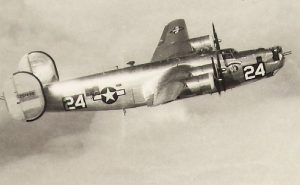 It was during the Battle of the Bulge in World War II, that a B-24J plane that had been dubbed the Tulsamerican went down in the waters off of Croatia on December 17, 1944. Piloted by Army Air Forces 1st Lieutenant Eugene P. Ford, the Tulsamerican carried a crew of nine servicemen. The Tulsamerican was the lead aircraft in a group of six B-24s from the squadron to participate in a combat bombing mission targeting oil refineries at Odertal, Germany. Ford was a member of the 765th Bombardment Squadron, 461st Bombardment Group, 15th Air Force.
It was during the Battle of the Bulge in World War II, that a B-24J plane that had been dubbed the Tulsamerican went down in the waters off of Croatia on December 17, 1944. Piloted by Army Air Forces 1st Lieutenant Eugene P. Ford, the Tulsamerican carried a crew of nine servicemen. The Tulsamerican was the lead aircraft in a group of six B-24s from the squadron to participate in a combat bombing mission targeting oil refineries at Odertal, Germany. Ford was a member of the 765th Bombardment Squadron, 461st Bombardment Group, 15th Air Force.
During a bombing run on December 17, 1944, the Tulsamerican was badly damaged. Ford and his crew, aboard the Tulsamerican were assigned to be the lead aircraft in a group of six B-24s from the squadron participating in a combat bombing mission targeting oil refineries at Odertal, Germany. As they came out of a cloud bank near the target, the squadron was attacked by more than 40 German Me-109 and FW-190 fighters. The unit suffered heavy losses. Three of their six aircraft were shot down and the other three damaged.
The Tulsamerican suffered heavy damage, and they knew they would not make it back to base. The only option  for a possible forced landing was the Isle of Vis in the Adriatic Sea in what is now Croatia. Landing a B-24J on the Isle of Vis was next to impossible, but Ford knew he had to try. Unfortunately, they couldn’t quite make it to the Isle of Vis, and ended up crashing into the Adriatic Sea. Seven of Ford’s crewmembers survived and were rescued, but three, including Ford, were killed in the crash, and their bodies were unable to be recovered.
for a possible forced landing was the Isle of Vis in the Adriatic Sea in what is now Croatia. Landing a B-24J on the Isle of Vis was next to impossible, but Ford knew he had to try. Unfortunately, they couldn’t quite make it to the Isle of Vis, and ended up crashing into the Adriatic Sea. Seven of Ford’s crewmembers survived and were rescued, but three, including Ford, were killed in the crash, and their bodies were unable to be recovered.
As most of us know, military men and women do not like to leave a man behind. Nevertheless, at the time, they were unable to recover the three missing men, and they were officially listed as MIA. Ford left behind an infant daughter and his 21-year-old widow, Marian McMillen Ford, who was pregnant with their son, Richard Stanton Ford. For years it seemed that Ford would never be recovered and laid to rest, but in July of 2017, his remains and his gold wedding band were recovered during a 19 day international scientific mission. Through DNA testing at the Defense POW/MIA Accounting Agency’s forensic anthropology lab in Hawaii, Ford’s remains were finally identified, and his family had closure.
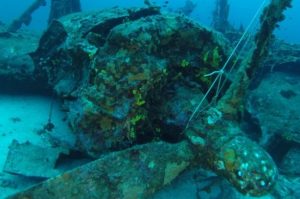
It was decided that ford would be buried in Arlington Cemetery. Ford’s only surviving child, 74 year-old Norma Ford Beard, traveled from her home near Indianapolis to attend the ceremony. She said her brother, Richard, who retired from the Navy after 20 years with two tours of duty in Vietnam, developed a keen interest in his father’s fate before he died in 2008. “He asked me if they ever found our father that I would see that he be buried at Arlington. I promised him that,” Beard said. Now Ford is buried next to the son he never got to meet. A very fitting place, if you ask me. Two honorable men laid to rest side by side…finally.

 Recently, while watching a couple of television shows, I noticed that the latest term for retirement is Second Act, and I found that term to be rather interesting at this particular time in my own life. As my retirement neared, I began to make some mental notes about what I wanted it to look like. Of course, the obvious things came to mind…the trips we want to take, the work around the house that has been put off for far too long, and yes, sleeping in a little bit, but what else did I want this time in my life to be about. Of course, there is also the increased amounts of time to spend with family. Trips to Bellingham, Washington to visit our daughter, Amy Royce and her family, Travis, Shai, and Caalab, and to meet Shai’s guy, Jordan Chapman and Caalab’s girl, Chloe Foster, are definitely on the list. More time to spend with our daughter Corrie’s family, Kevin, Chris and his girl, and Josh, who live right here in Casper, but with all of us being so busy, we don’t see them as often as we would like. And of course to visit with our great granddaughter, is a high priority too. She is growing up so fast, and I don’t want to miss out.
Recently, while watching a couple of television shows, I noticed that the latest term for retirement is Second Act, and I found that term to be rather interesting at this particular time in my own life. As my retirement neared, I began to make some mental notes about what I wanted it to look like. Of course, the obvious things came to mind…the trips we want to take, the work around the house that has been put off for far too long, and yes, sleeping in a little bit, but what else did I want this time in my life to be about. Of course, there is also the increased amounts of time to spend with family. Trips to Bellingham, Washington to visit our daughter, Amy Royce and her family, Travis, Shai, and Caalab, and to meet Shai’s guy, Jordan Chapman and Caalab’s girl, Chloe Foster, are definitely on the list. More time to spend with our daughter Corrie’s family, Kevin, Chris and his girl, and Josh, who live right here in Casper, but with all of us being so busy, we don’t see them as often as we would like. And of course to visit with our great granddaughter, is a high priority too. She is growing up so fast, and I don’t want to miss out.
As a blogger, the obvious next step is continued writing, and I will be blogging and advertising for my work alma mater…The Stengel Agency, and I am really happy to be staying close to everyone there, because they have been a huge part of my life for as much as 22 years, depending on the person. My life has been richly blessed by each and every person I worked with at The Stengel Agency, as well as their family members, who have become a part of my family too. My retirement will always include them, because they are of vital importance to me. Insurance has been a vital part of my life for 30 years now, since I first became an agent with the Don Foster Agency, before moving to The Stengel Agency in 1996. I would say that I am dating myself, but I think the word retirement has already done that, so the number of years as an insurance agent makes now really difference in that respect. Insurance has been good to me, even though it was not the career I had expected to have. Insurance made sense to me from the start.
As a writer, I have always been interested in writing a book. I guess we will see where that idea takes me, because I have no idea what I would like to write about…for a book anyway. Nevertheless, I’m sure it will come to me, because I have had no trouble coming up with story ideas in the past, so the future will simply bring with it longer story ideas. I’m sure that our travels will also help with writing ideas. Hiking the many beautiful  trails we have in this country cane be very inspiring, whether I’m writing about nature hikes or World War II. And, speaking of hiking, that is going to be a big part of my Second Act. The weekends never seemed long enough to get out and hike the mountain trails on Casper Mountain, but with the whole day, every day off, I think we might be able to squeeze them in once a week, at least. There are so many things that have been going through my mind as the day approached, and now that it’s here, I guess the time has come to begin. I’m still not totally sure what my own Second Act will look like, but I’m excited to begin to find out. I’m ready for anything!! So, let the adventures begin!!
trails we have in this country cane be very inspiring, whether I’m writing about nature hikes or World War II. And, speaking of hiking, that is going to be a big part of my Second Act. The weekends never seemed long enough to get out and hike the mountain trails on Casper Mountain, but with the whole day, every day off, I think we might be able to squeeze them in once a week, at least. There are so many things that have been going through my mind as the day approached, and now that it’s here, I guess the time has come to begin. I’m still not totally sure what my own Second Act will look like, but I’m excited to begin to find out. I’m ready for anything!! So, let the adventures begin!!
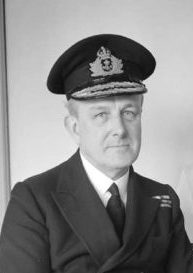 There was, during the Second World War, a somewhat strange and almost morbid plan that was concocted to dupe the Germans into believing that the Allies were going to invade Greece in 1943, when in fact, they were going to invade Sicily, some 500 miles away. The success of the mission really depended on the element of surprise, and in the end, the Allies needed something that would be believable to the Germans.
There was, during the Second World War, a somewhat strange and almost morbid plan that was concocted to dupe the Germans into believing that the Allies were going to invade Greece in 1943, when in fact, they were going to invade Sicily, some 500 miles away. The success of the mission really depended on the element of surprise, and in the end, the Allies needed something that would be believable to the Germans.
The thing that made the operation morbid was that in the end, they would use a dead body to bring about their deception. In their plan a body was dumped in the sea, to be discovered by Axis forces, carrying fake secret documents suggesting the invasion would be staged in Greece. They were a bit shocked when their plan worked, but work it did. The German troops were diverted to Greece, and Operation Mincemeat became a huge success, but even after it was over, it remained a source of secrecy, confusion, and conspiracy theory. The biggest source of confusion being…just who was this man who was found floating in the ocean, and how did he really die? For most people, the operation remains a mystery to this day, but one man believes that he now knows the true identity of the man found floating in the ocean.
In the 1956 film called “The Man Who Never Was,” one historian claims to have finally established beyond any reasonable doubt the identity of the person who played the part of the dead man, He believes he was a homeless Welshman named Glyndwr Michael. The body, which was given the identity of a fake Royal Marine, Major William Martin, was dropped into the sea off Spain in 1943. Winston Churchill had remarked that “Anyone but a bloody fool would know it was Sicily”, but after the tides carried Major Martin’s body into the clutches of Nazi agents, Hitler and his High Command became convinced Greece was the target. “You can forget about Sicily. We know it’s in Greece,” proclaimed General Alfred Jodl, head of the German supreme command operations staff.
“Mincemeat swallowed, rod, line and sinker” was the message sent to Churchill after the Allies learned the plot had worked. In recent years, there have been repeated claims that Mincemeat’s chief planner, Lieutenant Commander Ewen Montagu, was so intent on deceiving the Germans that he stole the body of a crew member from HMS Dasher, a Royal Navy aircraft carrier which exploded off the Scottish coast in March 1943, and lied to the dead man’s relatives. In 2003, a documentary based on 14 years of research by former police officer Colin 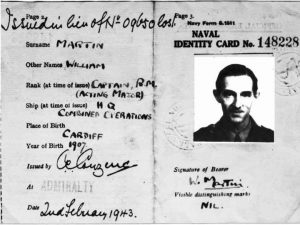 Gibbon claimed that ‘Major Martin’ was Dasher sailor Tom Martin. Then in 2004, official sanction appeared to be given to another candidate, Tom Martin’s crewmate John Melville. At a memorial service on board the current HMS Dasher, a Royal Navy patrol vessel, off the coast of Cyprus, Lieutenant Commander Mark Hill named Mr Melville as Major Martin, describing him as “a man who most certainly was”. Mr Melville’s daughter, Isobel Mackay, later told The Scotsman newspaper: “I feel very honored if my father saved 30,000 Allied lives.” I don’t suppose that we will ever know who the man really was, without exhuming his body, and that hardly seems right. Whoever he was, his family can rest assured that he saved many lives that day.
Gibbon claimed that ‘Major Martin’ was Dasher sailor Tom Martin. Then in 2004, official sanction appeared to be given to another candidate, Tom Martin’s crewmate John Melville. At a memorial service on board the current HMS Dasher, a Royal Navy patrol vessel, off the coast of Cyprus, Lieutenant Commander Mark Hill named Mr Melville as Major Martin, describing him as “a man who most certainly was”. Mr Melville’s daughter, Isobel Mackay, later told The Scotsman newspaper: “I feel very honored if my father saved 30,000 Allied lives.” I don’t suppose that we will ever know who the man really was, without exhuming his body, and that hardly seems right. Whoever he was, his family can rest assured that he saved many lives that day.
by guest writer – Brenda Schulenberg

 Caryn became part of our family on March 1, 1975…over 44 years ago, when she married my brother Bob!!! Little did any of us know at that time that Caryn would become such an important part of the Schulenberg family. Most of us don’t really remember too much of life without Caryn being a part of it. She has been a major part of our family for so many years now…and I would never want to imagine our family without her as a part of it.
Caryn became part of our family on March 1, 1975…over 44 years ago, when she married my brother Bob!!! Little did any of us know at that time that Caryn would become such an important part of the Schulenberg family. Most of us don’t really remember too much of life without Caryn being a part of it. She has been a major part of our family for so many years now…and I would never want to imagine our family without her as a part of it.
In the early years, Caryn spent most of her time raising her two girls, my nieces, Corrie and Amy. Then, before we knew it along came her four grandchildren Chris, Shai, Caalab and Josh. All of Caryn’s Grandchildren have a big place in her heart. She really enjoys being a Mother and Grandma…and on May 30, 2018, Caryn became a Great Grandma to Chris’s daughter who is a sweetie and is very special to all of us, but especially to her Great Grandma Caryn!
On October 14, 2018 Caryn’s faith in God was brought to life. On that day her husband Bob, my brother, suffered a heart attack. We were all very scared and thanks to Caryn’s faith in God, some very fast responders and some miracles too, Bob made a full recovery. Not that they needed it but Bob and Caryn now realize how special they are to each other.
Through the years, and as both sets of parents aged, Caryn was the primary care giver for all four parents…hers and Bob’s. It was tough on all of us to lose them, but they are in a far better place now. Also in October 2013, when I got sick Caryn saved my life by convincing me that I had to go to the hospital.
Caryn has always enjoyed bowling. She and Bob also like to go on walks and hikes when the weather permits. Bob and Caryn enjoy traveling for their annual hiking/anniversary trip to Thermopolis and to the Black Hills. They also travel for bowling tournaments too.
Caryn has spent the last year focusing on her health and my brother Bob’s. Caryn always has been very aware of how important good health is for all of us, but now that she is not having to care for all of our parents she has been focused on herself for once…and she has been very successful in this area!
On May 1, 2019 Caryn is going to start a new journey…it is called semi-retirement! She is still going to help out at The Stengel Agency some from home and when they need her (oh no she may be working more than she did before)!!!! Bob and Caryn have an adventure coming up towards the end of June. They will be flying to Everett, Washington, then driving to Bellingham, where they will visit Amy, Travis, Shai and Caalab. Following that visit, they will board the Amtrak Train in Seattle for a trip to Chicago, and then flying back to Denver  before driving home. Caryn and Bob are very excited for this trip and many more to come. I’m sure Caryn like everyone else that is retired will find herself very busy with traveling, hiking, her great grand-daughter and of course blogging!!!! Watch for information on her upcoming Retirement Party which will be held at a later date when the weather is good enough for a fun outdoor party.
before driving home. Caryn and Bob are very excited for this trip and many more to come. I’m sure Caryn like everyone else that is retired will find herself very busy with traveling, hiking, her great grand-daughter and of course blogging!!!! Watch for information on her upcoming Retirement Party which will be held at a later date when the weather is good enough for a fun outdoor party.
Caryn is an amazing woman! She is one of the best sisters-in-law (I consider her my Sister) that I could ever ask for. Today is Caryn’s birthday and I just want to say Happy Birthday Caryn. We all love you and appreciate you very, very much!!!!
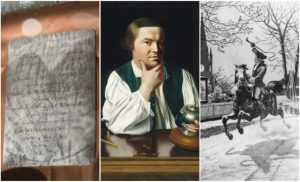 So often the past is lost because it was not preserved somehow, whether by writings, word of mouth, or in rare times it is preserved because someone put things in a time capsule to be opened at a later date. Most of us think of time capsules as a fairly modern concept, but they really aren’t. A few years ago, Massachusetts Governor Deval Patrick and other dignitaries were on hand to witness the opening of one of the nation’s oldest time capsules, located in the Art of the Americas wing at the Boston Museum of Fine Arts. The date was January 6, 2015. The museum’s conservator, Pam Hatchfield removed the screws from the corners of the brass box and carefully extracted its contents using tools including a porcupine quill and a dental pick that belonged to her grandfather.
So often the past is lost because it was not preserved somehow, whether by writings, word of mouth, or in rare times it is preserved because someone put things in a time capsule to be opened at a later date. Most of us think of time capsules as a fairly modern concept, but they really aren’t. A few years ago, Massachusetts Governor Deval Patrick and other dignitaries were on hand to witness the opening of one of the nation’s oldest time capsules, located in the Art of the Americas wing at the Boston Museum of Fine Arts. The date was January 6, 2015. The museum’s conservator, Pam Hatchfield removed the screws from the corners of the brass box and carefully extracted its contents using tools including a porcupine quill and a dental pick that belonged to her grandfather.
In December, Hatchfield had spent nearly seven hours extracting the time capsule from the cornerstone of the Massachusetts State House. The event brought with it an electrical feeling of excitement. The brass box, now green with age, measured 5.5 by 7.5 by 1.5 inches, which is a little smaller than a cigar box. It weighed 10 pounds. The contents of the time capsule were not a complete surprise, because the original time capsule had been removed in 1855, during some repairs to the building. At that time, its contents were cleaned and documented before it was placed back in the cornerstone.
More recently, workers fixing a leak unearthed the time capsule that had been placed in the building’s cornerstone more than two centuries earlier. But even after X-raying and examining the box, Hatchfield and her colleagues had no way of knowing what kind of condition the ancient contents would be in, nor did they have any idea of what was inside. The first items removed from the time capsule were folded newspapers. They 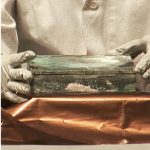
 were in “amazingly good condition” according to Hatchfield. There were five newspapers all, including copies of the Boston Bee and Boston Traveler. Next they removed 23 coins, in denominations of half-cent (something modern people haven’t heard of), penny, quarter, dime and half-dime (Isn’t that a nickel? I guess it hadn’t been named yet). Some of the coins dated back to the mid-19th century, but some were from 1795. There was also a so-called “Pine Tree Shilling” dated to 1652. Just the coins alone are an amazing find, but they wouldn’t be proof of who had placed them in the box. The box also contained a copper medal with George Washington’s image and the words “General of the American Army,” a seal of the Commonwealth of Massachusetts, and a title page from the Massachusetts Colony Records. There was no clear indication of who it had belonged to. Finally, Hatchfield removed a silver plate with fingerprints still on it, bearing an inscription dedicating the State House cornerstone on the 20th anniversary of American independence in July 1795. While the silver plate is amazing, to me, the fingerprints are a stellar find.
were in “amazingly good condition” according to Hatchfield. There were five newspapers all, including copies of the Boston Bee and Boston Traveler. Next they removed 23 coins, in denominations of half-cent (something modern people haven’t heard of), penny, quarter, dime and half-dime (Isn’t that a nickel? I guess it hadn’t been named yet). Some of the coins dated back to the mid-19th century, but some were from 1795. There was also a so-called “Pine Tree Shilling” dated to 1652. Just the coins alone are an amazing find, but they wouldn’t be proof of who had placed them in the box. The box also contained a copper medal with George Washington’s image and the words “General of the American Army,” a seal of the Commonwealth of Massachusetts, and a title page from the Massachusetts Colony Records. There was no clear indication of who it had belonged to. Finally, Hatchfield removed a silver plate with fingerprints still on it, bearing an inscription dedicating the State House cornerstone on the 20th anniversary of American independence in July 1795. While the silver plate is amazing, to me, the fingerprints are a stellar find.
“This cornerstone of a building intended for the use of the legislative and executive branches of the government of the Commonwealth of Massachusetts was laid by his Excellency Samuel Adams, Esquire, governor of the said Commonwealth,” Michael Comeau, executive director of the Massachusetts Archives, read from the plate’s inscription to the assembled crowd, adding “How cool is that.” It is believed that the plate was the work of Paul Revere, the master metalsmith and engraver turned Revolutionary hero who placed the time capsule alongside Adams and William Scollay, a colonel in the Revolutionary War. It took nearly an hour to remove all the items from the time capsule. I’m sure they wanted to be both careful, and also have a really good look at them. The 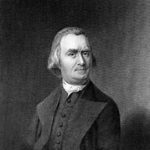

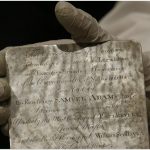 museum’s conservators then began the work on preserving the contents so they could be put on display. According to the Massachusetts Secretary of State, William Galvin, the time capsule will eventually be returned to the cornerstone, but it’s not certain whether state officials will add any new objects to it before burying it again.
museum’s conservators then began the work on preserving the contents so they could be put on display. According to the Massachusetts Secretary of State, William Galvin, the time capsule will eventually be returned to the cornerstone, but it’s not certain whether state officials will add any new objects to it before burying it again.

 A while back, my sister, Cheryl Masterson and I were talking about our Dad, Allen Spencer’s military training. Like much of Dad’s military service, big discussions about his training days were non-existent. So, I decided to trace his military career, to the best ability I could, and basically take a walk in his footsteps. We knew that he shipped out of Fort Snelling, Minnesota, and then spent time in Salt Lake City, Utah and in Kearney, Nebraska. We weren’t sure exactly where his basic training took place or his training for the B-17. That conversation got my curiosity going, and I decided that I needed to check it out. It’s not always easy to research a persons path through every aspect of their lives, but with the knowledge that he initially started out at Fort Snelling, I hoped to trace the rest of his journey through World War II. Fort Snelling, it turns out was a Reception Center. The men and women started there, received their vaccinations, medical exams, and their gear. They were classified and assigned to a unit. Then they were shipped out for their basic training.
A while back, my sister, Cheryl Masterson and I were talking about our Dad, Allen Spencer’s military training. Like much of Dad’s military service, big discussions about his training days were non-existent. So, I decided to trace his military career, to the best ability I could, and basically take a walk in his footsteps. We knew that he shipped out of Fort Snelling, Minnesota, and then spent time in Salt Lake City, Utah and in Kearney, Nebraska. We weren’t sure exactly where his basic training took place or his training for the B-17. That conversation got my curiosity going, and I decided that I needed to check it out. It’s not always easy to research a persons path through every aspect of their lives, but with the knowledge that he initially started out at Fort Snelling, I hoped to trace the rest of his journey through World War II. Fort Snelling, it turns out was a Reception Center. The men and women started there, received their vaccinations, medical exams, and their gear. They were classified and assigned to a unit. Then they were shipped out for their basic training.
Most of the men in dad’s original unit would go on to become part of the transport or supply teams, but because my dad had a job building airplanes for Douglas Aircraft Company prior to enlisting in the Army Air Force, he was moved to a unit that would spend the war in a B-17G flying Fortress Bomber. For my dad, it was an epic job. He often wrote home to his family about just how amazing the B-17 Bomber was, and how proud 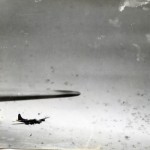
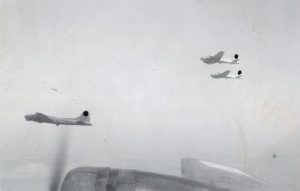 he was to be serving on one. Part of dad’s job was to be the flight engineer, another position that stemmed from his vast knowledge of airplanes. The flight engineer knew the all equipment on the B-17 better than the pilot and any other crew member from the engines to the radio equipment to the armament to the engines to the electrical system and to anything else. Many flight engineers served as maintenance crew chiefs before moving to the position of a B-17 flight engineer. The flight engineer was also the top turret gunner. Dad’s training for his work took him to Miami Beach, Florida, then to Gulfport, Mississippi, and Dyersburg, Tennessee.
he was to be serving on one. Part of dad’s job was to be the flight engineer, another position that stemmed from his vast knowledge of airplanes. The flight engineer knew the all equipment on the B-17 better than the pilot and any other crew member from the engines to the radio equipment to the armament to the engines to the electrical system and to anything else. Many flight engineers served as maintenance crew chiefs before moving to the position of a B-17 flight engineer. The flight engineer was also the top turret gunner. Dad’s training for his work took him to Miami Beach, Florida, then to Gulfport, Mississippi, and Dyersburg, Tennessee.
In Gulfport, Mississippi, dad was trained as a flight airplane mechanic, and it was here that he volunteered to become an aerial gunner as well. He received his wings in November 1943, following gunnery training in Las Vegas, Nevada. Dyersburg Army Air Force Base was the largest combat aircrew training school built during the early war years. It was the only inland B-17 Flying Fortress training base east of the Mississippi River. The base was located on 2,541 acres, not including the practice range. Approximately 7,700 crew men received their last phase training at DAAB. From Dyersburg AAB, dad was sent to Kearney, Nebraska. There he and his crew were assigned a brand new B-17G bomber. Shortly thereafter they flew to New York to be dispatched to their base in the European Theater…Great Ashfield, Suffolk, England. Before arriving there, he wasn’t even sure where he was going, because these things were kept top secret, and were revealed on a need-to-know basis. Based out of Great Ashfield, dad flew 36 missions, one more that the required 35, having volunteered to fill in for a sick 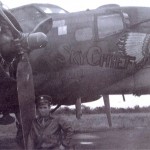
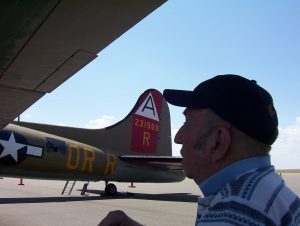 crewmember on the final flight. In one of his letters, he told his family not to worry about him, because as he said, “I’m not afraid of what the near future might bring. I’m going into combat fully confident of my plane, crew, and myself. And I know that with the help of God, I’ll come home again in just as good a condition as I am right now.” And so he did. Today would have been my dad’s 95th birthday. Happy birthday in Heaven Dad. We love and miss you very much and we are so proud of you.
crewmember on the final flight. In one of his letters, he told his family not to worry about him, because as he said, “I’m not afraid of what the near future might bring. I’m going into combat fully confident of my plane, crew, and myself. And I know that with the help of God, I’ll come home again in just as good a condition as I am right now.” And so he did. Today would have been my dad’s 95th birthday. Happy birthday in Heaven Dad. We love and miss you very much and we are so proud of you.

 When I asked his dad what was new with my grand-nephew, Zack Spethman, the first thing he said was, “He’s tall.” And that is the truth. Zack has literally shot up in height in the past couple of years. It shocks me every time I see him. I pretty much have to stand on my tip toes just to give him a hug. While Zack is the second son of my niece, Jenny Spethman and her husband, Steve, I have a feeling that he might be the tallest person in his family. It’s hard to say, because the boys still have some growing to do, but at this point, Zack is most definitely in the lead.
When I asked his dad what was new with my grand-nephew, Zack Spethman, the first thing he said was, “He’s tall.” And that is the truth. Zack has literally shot up in height in the past couple of years. It shocks me every time I see him. I pretty much have to stand on my tip toes just to give him a hug. While Zack is the second son of my niece, Jenny Spethman and her husband, Steve, I have a feeling that he might be the tallest person in his family. It’s hard to say, because the boys still have some growing to do, but at this point, Zack is most definitely in the lead.
Zack is such a loving, sweet natured young man, and he is never afraid to show people that he loves them. Many teenagers…especially boys are worried about the hit their “image” might take, if they are seen hugging their mom, dad, or aunts and uncles in public, but Zack doesn’t care about all that. Zack’s sweet nature doesn’t make him a wimp, just the opposite in fact. Zack is great in sports, and a great protector of those he cares about. Zack knows how to shoot a gun, and after passing hunter safety a year or so ago, he is also a great hunter. Zack and his brothers, Xander and Isaac, love to do  the same things their dad is doing. From guns to snowmobiles to swimming to hiking, they are all in!!
the same things their dad is doing. From guns to snowmobiles to swimming to hiking, they are all in!!
Of course, these boys aren’t too proud to play with their little sister, Aleesia, and help he with anything she needs. They treat her like a princess, and she loves each and every one of them. Zack is also a perfect gentleman at school, and his teachers all think the world of him. He is never on to get into trouble, and rather is the first one to offer assistance whenever it is needed. He makes his parents, and the rest of the family, very proud of him, and I know that he will continue to turn into a wonderful young man. Today is Zack’s 14th birthday. Happy birthday Zack!! Have a great day!! We love you!!

 My aunt, Doris Spencer is an amazing woman. She is 95 years young today, and still going strong. Oh, she’s had her ups and downs, but her memory is still pretty strong. When we visited her last, she knew who we were, and we had a very nice visit about the past, when everyone was still here on Earth. The visit was a bittersweet, because on our prior visit, out mom, Collene Spencer was with us. She and Aunt Doris were best friends, as well as sisters-in-law, and they hadn’t seen each other in many years. Their reunion was wonderful, and we were all sorry to have it end. The next visit was after our mom had gone to Heaven, and while Aunt Doris was glad to see us, we all missed mom a lot.
My aunt, Doris Spencer is an amazing woman. She is 95 years young today, and still going strong. Oh, she’s had her ups and downs, but her memory is still pretty strong. When we visited her last, she knew who we were, and we had a very nice visit about the past, when everyone was still here on Earth. The visit was a bittersweet, because on our prior visit, out mom, Collene Spencer was with us. She and Aunt Doris were best friends, as well as sisters-in-law, and they hadn’t seen each other in many years. Their reunion was wonderful, and we were all sorry to have it end. The next visit was after our mom had gone to Heaven, and while Aunt Doris was glad to see us, we all missed mom a lot.
Still, we talked about the old days, and all the fun we had, as well as how much the family had grown, and the visit went very well. Our family always loved going to visit. Aunt Doris had a lovely home, and we all had a great time. We also loved having them come to our house for visits. Those years went by so fast, and the years after we all grew up went by even quicker. I wish that we hadn’t let the time go by without visiting. Sometimes, you allow yourself to think that there will be time next year, or maybe the next, and when you 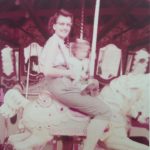
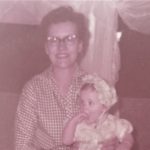 finally get around to it, you find yourself with much less time than you thought. Still, I was very thankful that we got my aunt and my mom back together again…especially since it was the last time for them.
finally get around to it, you find yourself with much less time than you thought. Still, I was very thankful that we got my aunt and my mom back together again…especially since it was the last time for them.
Aunt Doris is 95 years old today, and it is my hope that we will be able to get up to Wisconsin to see her again in the very near future. She is very special to us and we love her very much. It is my hope that she continues to live a long life in good health. Today is Aunt Doris’ birthday. Happy birthday Aunt Doris!! Have a great day!! We love you!!

 My little grand-nephew, Bowen Parmely is a happy little boy who is turning 2 years old today. Bowen’s first two years have been quite eventful. He is the younger brother to two sisters, Reagan and Hattie, and so there was always someone to play with. Being the only boy in the family, might have affected the kinds of games he played, but not in any big way, because Bowen is all boy. I have no doubt that in the future, he will tease his sisters quite a bit. A guy’s gotta make up for lost time, because while he is the littlest, the girls are well able to “boss” him around. Unfortunately for Bowen, I don’t know if he will ever find himself the boss when it comes to his sisters. Nevertheless, Reagan and Hattie love their little brother very much, and they have taught him lots of things in these first two years…and I’m sure he has taught them a few things too.
My little grand-nephew, Bowen Parmely is a happy little boy who is turning 2 years old today. Bowen’s first two years have been quite eventful. He is the younger brother to two sisters, Reagan and Hattie, and so there was always someone to play with. Being the only boy in the family, might have affected the kinds of games he played, but not in any big way, because Bowen is all boy. I have no doubt that in the future, he will tease his sisters quite a bit. A guy’s gotta make up for lost time, because while he is the littlest, the girls are well able to “boss” him around. Unfortunately for Bowen, I don’t know if he will ever find himself the boss when it comes to his sisters. Nevertheless, Reagan and Hattie love their little brother very much, and they have taught him lots of things in these first two years…and I’m sure he has taught them a few things too.
Bowen and his sisters love to ride their bicycles, and Bowen is quickly learning the ropes of a strider. When I was a kid, nobody ever thought of taking the peddles off of the bicycle or tricycle, and just letting the kid sit on the seat and walk it out, but it is really a great way to put the little ones on a bicycle early on, and Bowen doesn’t like to be left out of the fun, so it’s a vital tool toward getting him into the action. Of course, there isn’t much that his sisters are doing that Bowen doesn’t do too, with the exception of school. Bowen and his sisters help out on the farm, and they get to play with the babies, as well as watching their birth. That is all part of a good farm education, and a part that city dwellers don’t get. 

While Bowen’s sisters love all the little farm babies, and Bowen does too, but for him, they come second, because he has something he is far more interested in…tractors. Typical boy thing, and something that he gets from his dad, and probably a grandpa or two. Bowen comes from a long line of farm and ranch people, and from what I have seen, he is totally ok with that. Today is Bowen’s 2nd birthday. Happy birthday Bowen!! Have a great day!! We love you!!
 These days, it’s called scooping the story. A scoop is an item of news reported by one journalist or news organization before others have a chance to report the same story, and in modern times, it is vital to be the first one to report a story if possible, because in 5 minutes, it’s old news. While scooping is a big deal in today’s world, we wouldn’t think that in times past it would as big a deal as it is today, because of the instant source of information the internet provides. Nevertheless, we would be very wrong.
These days, it’s called scooping the story. A scoop is an item of news reported by one journalist or news organization before others have a chance to report the same story, and in modern times, it is vital to be the first one to report a story if possible, because in 5 minutes, it’s old news. While scooping is a big deal in today’s world, we wouldn’t think that in times past it would as big a deal as it is today, because of the instant source of information the internet provides. Nevertheless, we would be very wrong.
William Byers was a surveyor working in Oregon and Washington. He also served as a territorial When he heard about the discovery of gold and silver near Pike’s Peak area of Colorado, he decided fulfill a dream he had, and be the publisher of a newspaper. Byers arrived in Denver in March of 1959. Denver was quickly becoming a center for the mining industry in Colorado. Byers decided that it was the perfect location to begin publishing his newspaper, but Byers wasn’t the only journalist with this idea. As was the case in many western frontier towns, would-be journalists in Denver were vying for the honor of publishing the first newspaper.
Byers’ named his paper The Rocky Mountain News, because of the rugged mountains in the area. His biggest competitor was the Cherry Creek Pioneer, and both of them were rushing to get their newspaper into print. Byers set to work on the first edition of his newspaper shortly after he arrived in Denver in March. Working with a hand press in the attic of a local saloon…not the usual type of production office for newspapers, but it was what he had, so there in that dusty attic, byers got to work.
It was a race to the finish between the two competitors, and it was really anybody’s guess as to who would win. Each kept their production room private, so the other would not know the current status. Then, on April 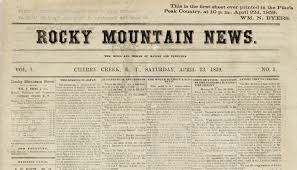 23, 1859, beating the first release of The Pioneer by only 20 minutes, Byers became the first man to publish a news paper in Denver. It was the perfect scoop, but the term scoop, which is of American origin, and wasn’t documented until 1874. A verb, meaning to beat someone in reporting first, it is first used in 1884. By the time the other paper came out, 20 minutes later, any news that was new was now old news. Byers had successfully beat the competition. He died in 1903, having witnessed and shaped Denver’s transformation from a rugged frontier-mining town to a sophisticated business and financial center of the Rocky Mountain West.
23, 1859, beating the first release of The Pioneer by only 20 minutes, Byers became the first man to publish a news paper in Denver. It was the perfect scoop, but the term scoop, which is of American origin, and wasn’t documented until 1874. A verb, meaning to beat someone in reporting first, it is first used in 1884. By the time the other paper came out, 20 minutes later, any news that was new was now old news. Byers had successfully beat the competition. He died in 1903, having witnessed and shaped Denver’s transformation from a rugged frontier-mining town to a sophisticated business and financial center of the Rocky Mountain West.

